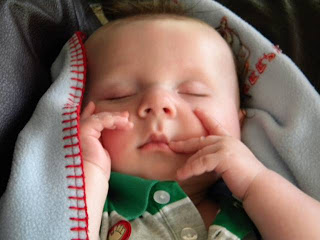Soy Batik Silk Scarf
I can't write in sanskrit, so I just scribbled something that I thought seemed a little bit like sanskrit when I was doing the soy wax batik resist for this scarf. Here's sort of a how-to: Start with a silk scarf and prewash it. I like to give mine a strong scrub in the washer, but avoid soap or detergent. Let it dry flat or hanging. Then it is ready for the resist. "Resist" is a term used for making part of the fabric where it won't soak up any color. You melt soy wax and apply it to the scarf. Where ever the wax soaks in, it will keep the fibers from taking any color. Next, apply alum. I keep a batch of alum made up for this purpose and made mine a year ago, so I don't recall the recipe. It can be looked-up online. Allow your article to dry in the air. You can see already that this process takes several days. The next day, place your scarf in the dyepot. For Rose Madder as in this one, I made up a dye batch several days ago. I happened to leave it under the roof dripline and it got some rainwater in it. Every item and every dyebath is different, so there is always a huge range of possibilities .... all of which are uncontrollable.... when you do this. You can gently and slowly heat Rose Madder Root dye bath, but don't let it boil. It should steam and simmer but not boil. Boiling is very bad for silk. When you've achieved the color you like, turn off the heat. Next day it will have cooled, and you can squeeze the dye out of the scarf and hang up the scarf some place on a towel where it can get bone-dry.
By now, you're going to start seeing clumps of soy wax flaking off, but that is OK. Now, for the ethical question: Do you wash it in the washer in a lingerie bag, or hand wash it in the sink? Either way, use hot water of about 140 degrees to melt the wax. Choose to do this in the drain you would like to stopp upp. I like to alternate, hoping that there's enough routine family traffic in those drains to avoid a bad plugging. Allow your silk scarf to dry completely. There are two alternative methods for the step of ironing away the remaining soy wax. You could place the scarf between layers of tissue paper (white.... not purple) and iron on the silk setting. Or you could gum up your iron anyway by not using paper to absorb the wax. I use the latter method (having taken a vow of ironinglessness many years ago which I have faithfully kept). But if you actually use your iron like an ironing person, then don't be like me. Otherwise your spouse will have strange blobs of what only you know is soy wax on his shirt, and you'll feel remoreseful but never admit you done it. This code of silence can damage even the strongest love---- I know. Four husbands and I am still making mistakes.
Now your scarf should be colorfast, clean and ready to wear for some quirky adventure..... geocaching? Time travel? Visiting a client in jail? Probably best not to wear such a scarf to jail, as it would make a fine hostage leash if things went badly.
This scarf is for sale, $18 and can be purchased by emailing ktibbits@lrec.org . It will probably be available thru Oklahoma Food Cooperative and on etsy soon, so you might look for it in one of my shops by clicking on one of the images in the righthand margin of this blog page.

































